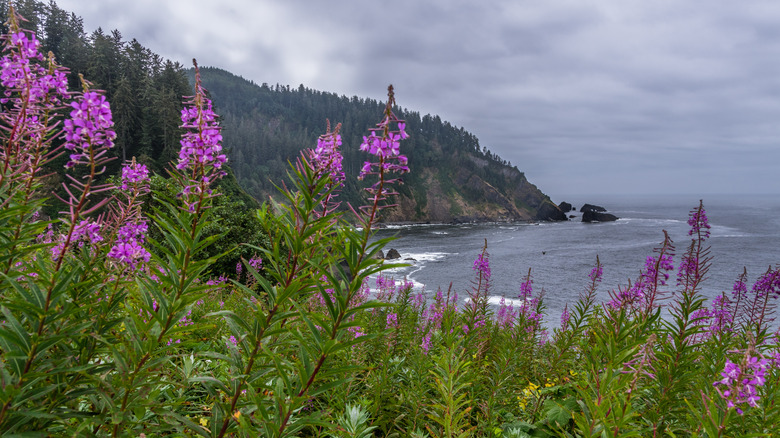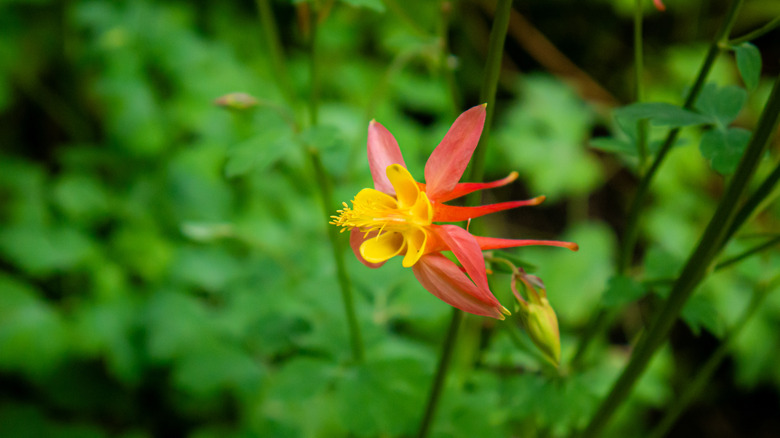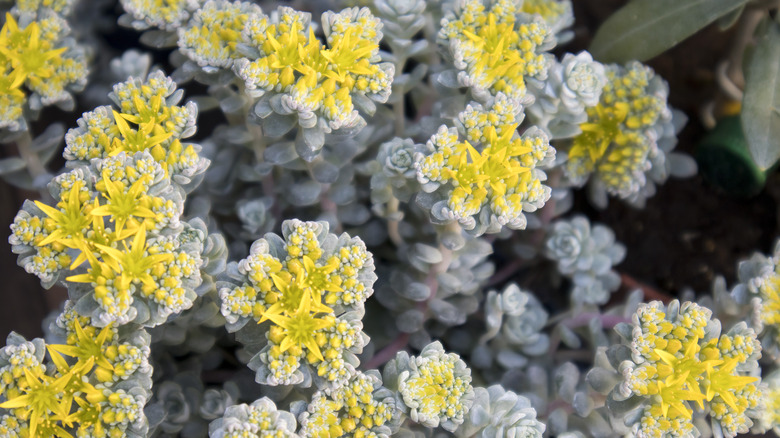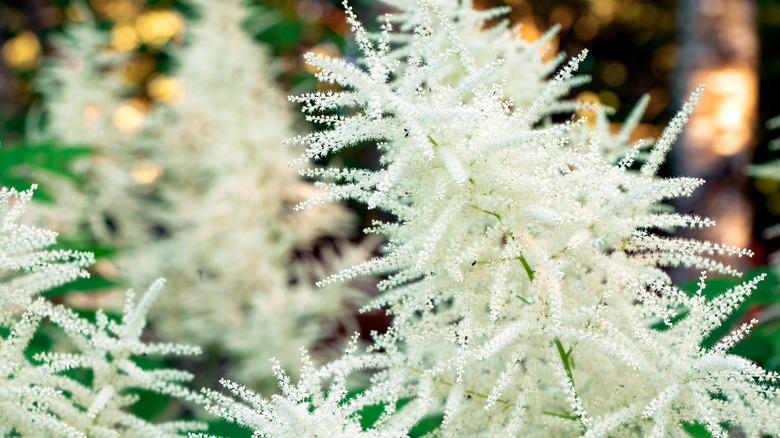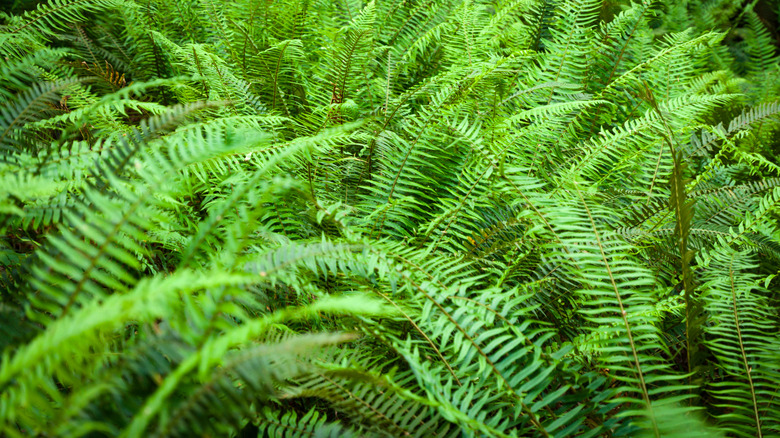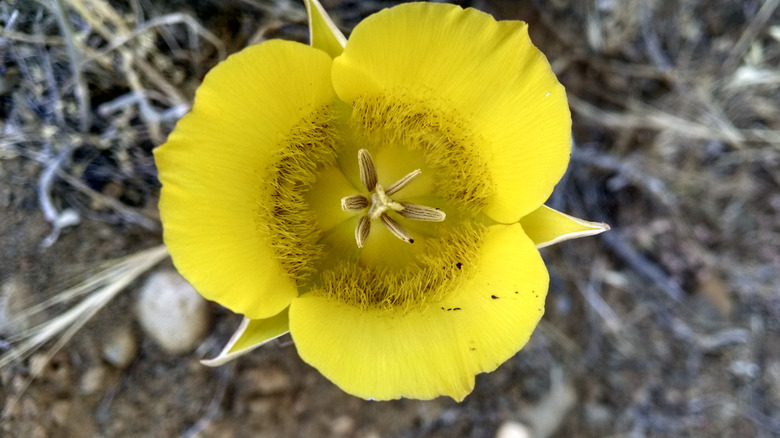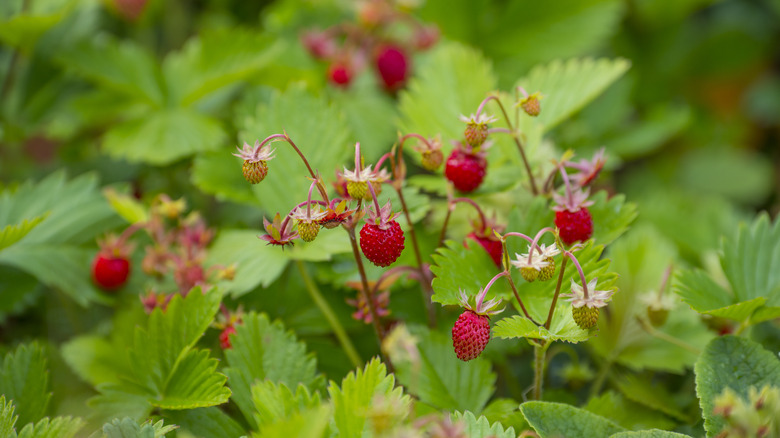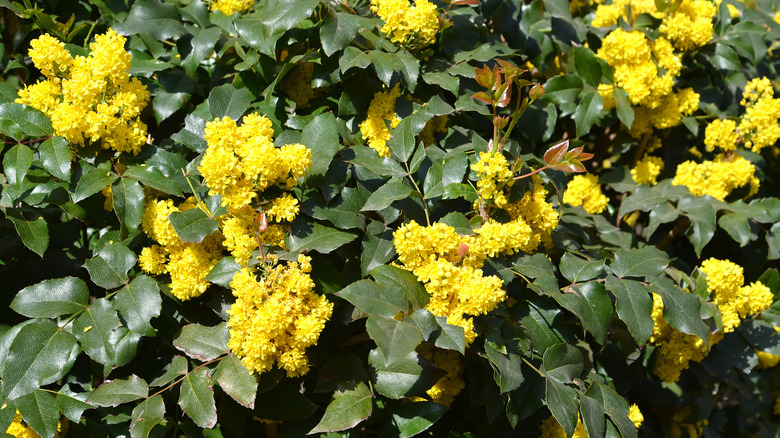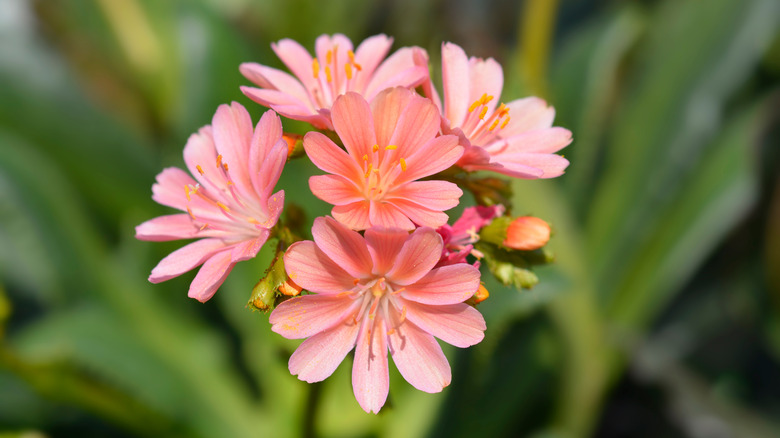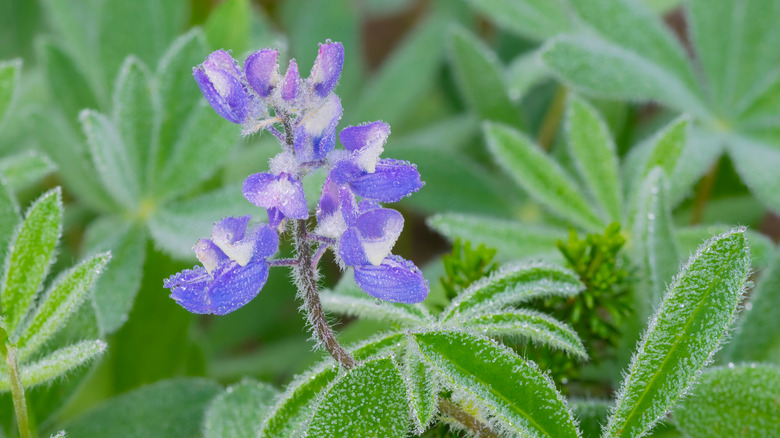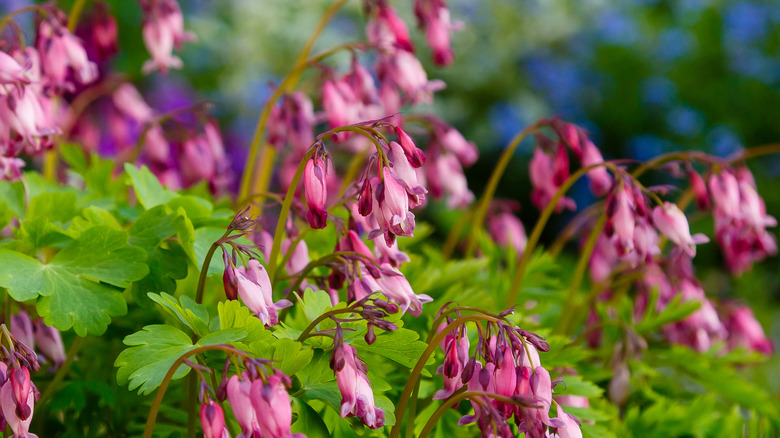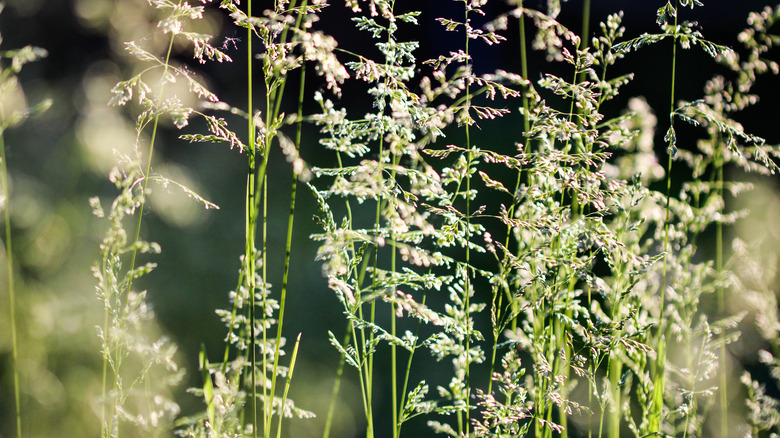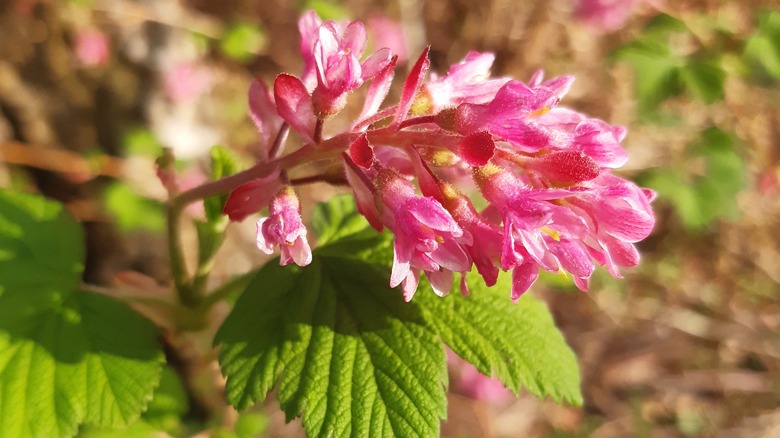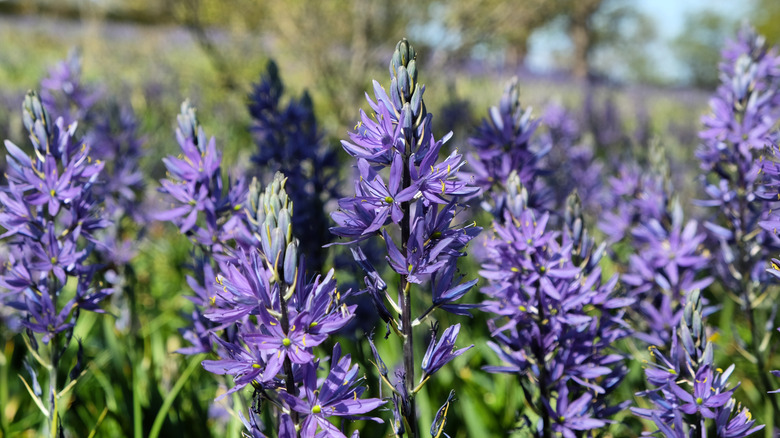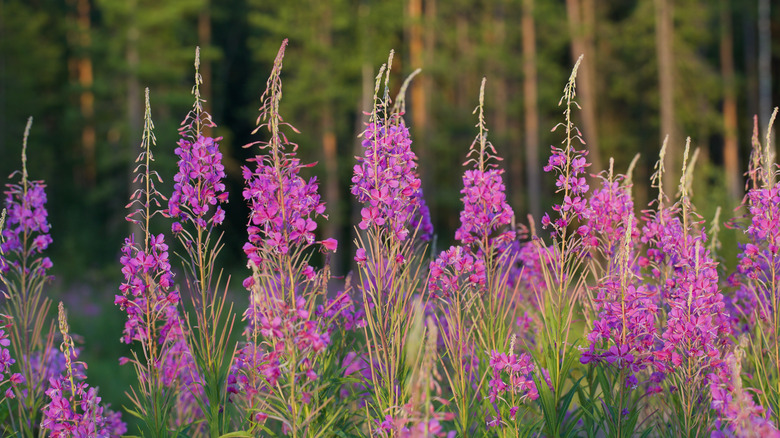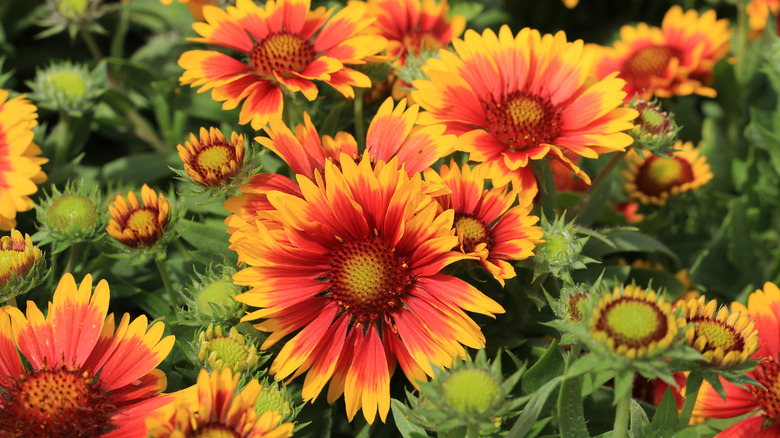15 Best Native Plants To Grow If You Live In The PNW
The Pacific Northwest is known for its natural diversity, which includes rugged mountains, vast forests, and a stunning coastline off of Washington, Oregon, and northern California. This region is home to many species of beautiful flowers and green plants that thrive in the cool, temperate climate that provides plenty of water, filtered sunlight, and fertile soil. If you live in the PNW, there are many plants that you can grow right in your backyard that are native to the area.
When you decide to grow native plants in the northwestern corner of the United States, you'll find that they require limited care and they grow easily on their own. But, that isn't the only reason that you should grow a native garden. As taught by the East Multnomah Soil and Water Conservation District, plants that naturally occur in your area can save you money and benefit local wildlife. Gardens that grow species native to the Pacific Northwest invite birds, butterflies, bugs, and fauna that use the plants for shelter or food. In addition to this, you will save on water, pesticide, and fertilizer usage each year as your native plants use what is naturally available to them. If you're interested in saving money and saving the world, this collection of 15 plants can help you take your first step in the right direction.
1. Western columbine
Western columbine (Aquilegia formosa), of the buttercup family, features vibrant orange and red petals. It requires an average watering schedule, a shady location, and compost-rich soil to grow properly and bloom toward the end of spring and throughout the summer months. This species of columbine can grow quite tall, and is known for bringing hummingbirds to your garden.
Bloom Season: Late spring to early summer
USDA Growing Zone: 3 to 9
Growing Conditions: Partial to full shade
Soil Type: Well-draining loam, sand, or clay soil
Size: Up to 40 inches
2. Broadleaf sedum
The broadleaf sedum (Sedum spathulifolium), or broadleaf stonecrop, is a succulent that grows on the Pacific coast from northern California to British Columbia. As explained by the Washington Native Plant Society, inside the leaves of broadleaf sedum is a juice that has been used medicinally by Native Americans. The juice is said to heal wounds, ease childbirth, and remedy sore gums.
Bloom Season: Spring to summer
USDA Growing Zone: 5 to 9
Growing Conditions: Full sun to partial shade
Soil Type: Gravely and well-draining
Size: 3 to 8 inches tall
3. Goatsbeard
Goatsbeard (Aruncus dioicus) is a leafy perennial that can add drama to any native flower garden. It is very low-maintenance and produces unique white blossoms that work great as cut flowers for floral arrangements. As is the case with most leafy plants native to northwestern America, goatsbeard's leaves change color in the fall to copper and red, as shown by the University of Wisconsin-Madison.
Bloom Season: Late spring and summer
USDA Growing Zone: 3 to 8
Growing Conditions: Partial shade to full sun
Soil Type: Moist and rich
Size: 8 inches dwarf varieties to 4 feet tall
4. Western sword fern
The western sword fern (Polystichum munitum) grows nicely in the cooler PNW climate where it receives plenty of water and some shade. The hardy, evergreen plant is known for its arching fronds packed with glossy, toothed leaves. This fern, which Monrovia says is prized for its foliage, pairs well with other native plants such as pacific bleeding hearts and western columbine.
Bloom Season: Does not flower
USDA Growing Zone: 5 to 9
Growing Conditions: Full sun to full shade
Soil Type: Evenly moist, fertile, and well-draining
Size: 3 to 6 feet tall and wide
5. Yellow mariposa lily
Yellow mariposa lily (Calochortus luteus) is great for a spring garden. This plant's bell-shaped yellow flowers spark joy as the sky grows cloudy in the northwest region of the United States. Make sure to plant yours in an area that receives some sun and shade. As long as the mariposa lily receives enough water in the winter and spring, it will thrive until the start of summer.
Bloom Season: Spring
USDA Growing Zone: 3 to 7
Growing Conditions: Full sun to partial shade
Soil Type: Well-draining
Size: 10 to 20 inches tall
6. Alpine strawberry
Alpine strawberries (Fragaria vesca) are a common addition to native gardens in the Inland Northwest. Though they are primarily thought to be native to Europe and Asia, varieties of alpine strawberries have also been found to occur naturally in the western United States, as per Missouri Botanical Garden. Alternatively called the woodland strawberry, this plant is most often grown for ornamental use.
Bloom Season: Spring to summer
USDA Growing Zone: 5 to 9
Growing Conditions: Full sun to partial shade
Soil Type: Humusy, fertile, and well-draining
Size: 3 to 9 inches tall and 9 to 12 inches wide
7. Oregon grape holly
The tall growing shrub, Oregon grape holly (Mahonia aquifolium), is the state flower of Oregon, as stated by Oregon State University. The flowers on this plant are bright yellow and form in tight clusters. In the mid-summer, these blossoms give way to blackish-blue fruit that is edible, although it does not taste like a grape as the name implies.
Bloom Season: Early spring
USDA Growing Zone: 5 to 8
Growing Conditions: Partial to full shade
Soil Type: Moist and well-draining
Size: 3 to 10 feet tall
8. Siskiyou lewisia
Siskiyou lewisia (Lewisia cotyledon) is an intensely beautiful flower that blooms throughout the spring and summer. While it does well in rock gardens and containers, some people in the Pacific Northwest choose to grow theirs in native border gardens. No matter where you decide to grow yours, make sure that it is provided with well-draining soil, regular watering, and some sun, as advised by Monrovia.
Bloom Season: Spring to summer
USDA Growing Zone: 6 to 8
Growing Conditions: Full sun to partial shade
Soil Type: Average and well-draining
Size: 6 to 12 inches tall and wide
9. Broadleaf lupine
Broadleaf lupine (Lupinus latifolius) is grown for both its foliage and its flowers. During the summer, it attracts birds and bees as well as many animals such as marmots and deer that snack on some parts of the plant. Broadleaf lupine spreads widely down the Unites States' western coast from Canada to Mexico, but it is most commonly found in subalpine meadows in the Pacific Northwest.
Bloom Season: Summer
USDA Growing Zone: 5 to 9
Growing Conditions: Full to partial shade
Soil Type: Well-draining
Size: 1 to 4 feet tall
10. Pacific bleeding heart
Pacific bleeding heart (Dicentra formosa) is a herbaceous perennial that is also sometimes known as 'Dutchman's Breeches' even though it does not show off pantaloon-shaped flowers, as shown by Washington State University. Pacific bleeding hearts look almost identical to the common bleeding heart plants that we know and love. The difference between them is only that the latter can withstand colder temperatures and spreads less aggressively, says the Seattle Times.
Bloom Season: Spring
USDA Growing Zone: 4 to 8
Growing Conditions: Partial shade
Soil Type: Well-draining
Size: 2 feet tall and wide
11. Tufted hairgrass
Tufted hairgrass (Deschampsia cespitosa) is named after its thin, hair-like stems and flowers that appear green and gold. A host plant, this ornamental grass attracts butterflies that allow their larvae to feast on its foliage, as explained by Prairie Nursery. If you plan to grow tufted hairgrass, remember that it does great mixed with smaller ferns that enjoy light shade or dappled sunlight.
Bloom Season: Summer
USDA Growing Zone: 4 to 8
Growing Conditions: Partial shade
Soil Type: Moist clay, loam, or sand
Size: 1 to 3 feet tall
12. Red flowering currant
The red flowering currant shrub (Ribes sanguineum) is a spring flowering plant that produces insipid edible berries, explains Oregon State University. The multi-stemmed deciduous shrub, which can grow into a small tree, has several different varieties, and many of them are native to the Pacific Northwest, including 'Elk River Red' and 'Spring Showers'.
Bloom Season: Early spring
USDA Growing Zone: 6 to 8
Growing Conditions: Full sun to partial shade
Soil Type: Well-draining
Size: 8 to 10 feet tall
13. Common camas
Common camas (Camassia quamash) is a herbaceous perennial that typically grows in Montana, Utah, Washington, Wyoming, and Northern California, according to the Washington Native Plant Society. The flowering plant is known for its blue-purple blooms, which have six petals each that curve inward toward the center of the flower. Common camas is most often found in open areas like meadows and fields, but it can also be grown in flower beds.
Bloom Season: Spring
USDA Growing Zone: 4 to 11
Growing Conditions: Full sun to partial shade
Soil Type: Moist and fertile
Size: 2 to 28 inches tall
14. Fireweed
In the temperate northern hemisphere, fireweed (Chamaenerion angustifolium) can be found growing vigorously in open woods, pastures, and fields, as well as along roadsides and nearby streams. Despite this, fireweed gets its name from its insistence on growing in areas previously affected by wildfire, mentions Missouri Botanical Garden. In the UK, fireweed is also referred to as bombweed because it would quickly grow in bomb craters during and after WWII.
Bloom Season: Summer to fall
USDA Growing Zone: 2 to 7
Growing Conditions: Full sun to partial shade
Soil Type: Rich and well-draining
Size: 2 to 5 feet tall
15. Blanket flower
The blanket flower (Gaillardia spp.) is a long-blooming flower native to several regions across North and South America. This short-lived perennial is loved for several reasons, including its ability to attract pollinators, ward off deer, and live through periods of drought. North Carolina State Extension recommends using this flower for mass plantings, border gardens, or in containers.
Bloom Season: Summer to fall
USDA Growing Zone: 3 to 9
Growing Conditions: Full sun
Soil Type: Well-draining loam or sand
Size: 48 inches tall and 30 inches wide
